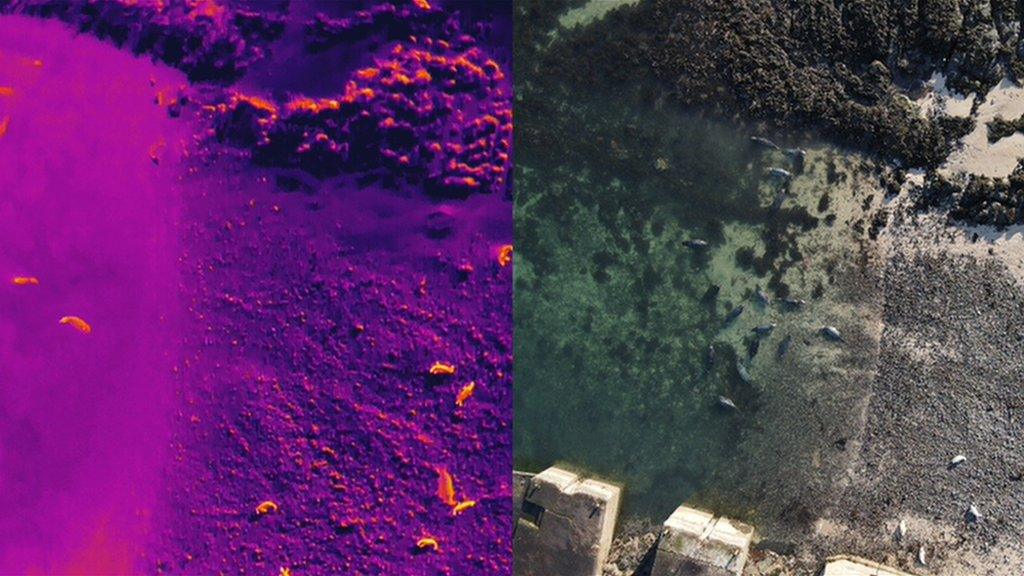Thermal imaging cameras help count seal pups from the air
- Published
- comments

This photo shows the thermal image on the left and a normal aerial picture on the right. The heat detection camera makes it much easier to spot the seals in the water
The number of seals at the Farne Islands, a large nature reserve off the Northumberland coast, is being monitored using thermal imaging cameras for the first time.
Each year the number of pups born is recorded and the size of the colony monitored.
It is usually done using a special drone to capture aerial photographs. This lets researchers count lots of the mammals in a short amount of time.
Now thermal images will be used as well, which will help to identify the creatures from the air more easily.
A specially permitted drone is used by researchers. It is the fourth year drones have been used to count the grey seal population
A big job
Once the first pup is born the researchers begin their annual count.
This year the National Trust, which looks after the Farne Islands, is working with scientists from Newcastle University, Oxford University, the Sea Mammal Research Unit (SMRU) and drone company TerraDrone to count the seals.
The drones and thermal imaging make it much easier for them to spot the pups in more remote areas, like the smaller islands, which are hard to reach when the weather is bad.
The UK is home to around 44% of the global population of grey seals
Atlantic grey seals are protected marine mammals. They come to the Farne Islands every year to give birth.
The pups are born with white fur and usually stay on land for 2-3 weeks while they are fed by their mums.
Once they shed their fluffy coat they get their grey waterproof fur and are able to go into the sea to hunt.
The grey seals blend into the rocks making them harder to spot. The pups are the smaller animals with white fur
Numbers are up
The number of grey seals has gone up in recent years which is thought to be because of a lack of predators and disturbances to the colony.
In 2019 there was a record high of 2,823 pups - an increase of 62 percent over the last five years.
The teams weren't able to do the count in 2020 because of the coronavirus pandemic but it is hoped the upward trend has continued.
With a larger population to count this new technological approach is even more useful.
Ranger Thomas Hendry commented: "We are using a drone again this year which as well as filming the pups is fitted with thermal imaging technology to help make the count more accurate and less stressful for the seals.
"Having the extra thermal imaging technology is particularly useful now that the islands are supporting more and more pups and the population is denser."
- Published12 April 2021
- Published26 October 2020
- Published11 September 2021
